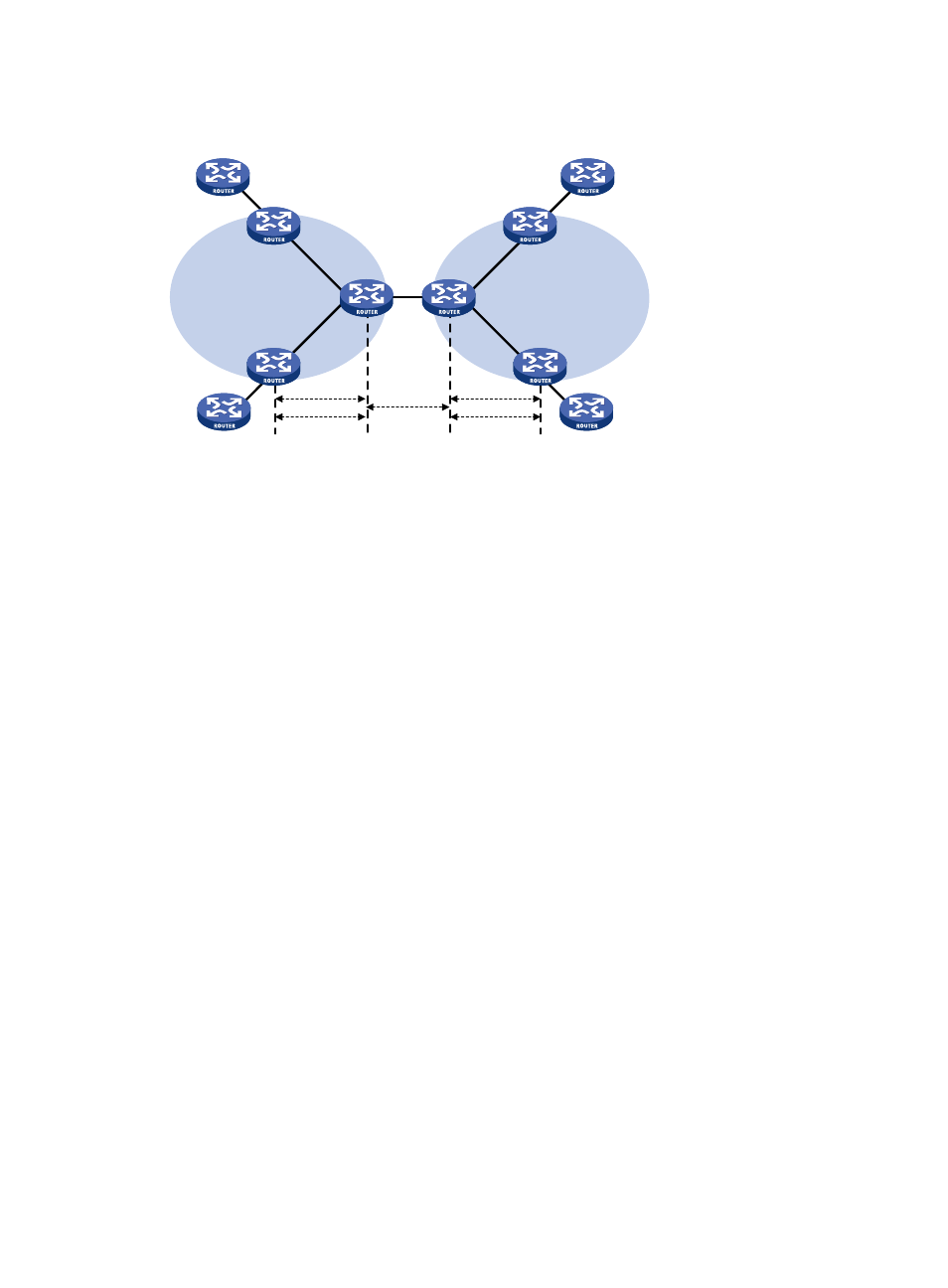Inter-as option c – H3C Technologies H3C S10500 Series Switches User Manual
Page 242

231
Figure 60 Network diagram for inter-AS option B
VPN 1
CE 1
PE 1
PE 3
VPN 1
CE 3
CE 2
VPN 2
VPN 2
PE 2
PE 4
ASBR 1
(PE)
ASBR 2
(PE)
VPN LSP 1
VPN LSP 3
LSP 1
LSP 2
CE 4
VPN LSP2
MP-EBGP
AS 100
AS 200
MP
-IBG
P
MP
-IB
GP
MP
-IBG
P
M
P-
IBGP
MPLS backbone
MPLS backbone
In terms of scalability, inter-AS option B is better than option A.
When adopting MP-eBGP method, note the following:
•
ASBRs perform no VPN target filtering on VPN-IPv4 routes that they receive from each other.
Therefore, the ISPs in different ASs that exchange VPN-IPv4 routes must agree on the route
exchange.
•
VPN-IPv4 routes are exchanged only between VPN peers. A VPN user can exchange VPN-IPv4
routes neither with the public network nor with MP-eBGP peers with whom it has not reached
agreement on the route exchange.
Inter-AS option C
The Inter-AS option A and option B solutions can satisfy the needs for inter-AS VPNs. However, they
require that the ASBRs maintain and advertise VPN-IPv4 routes. When every AS needs to exchange a
great amount of VPN routes, the ASBRs may become bottlenecks hindering network extension.
One way to solve the problem is to make PEs directly exchange VPN-IPv4 routes without the participation
of ASBRs:
•
Two ASBRs advertise labeled IPv4 routes to PEs in their respective ASs through MP-iBGP.
•
The ASBRs neither maintain VPN-IPv4 routes nor advertise VPN-IPv4 routes to each other.
•
An ASBR maintains labeled IPv4 routes of the PEs in the AS and advertises them to the peers in the
other ASs. The ASBR of another AS also advertises labeled IPv4 routes. Thus, an LSP is established
between the ingress PE and egress PE.
•
Between PEs of different ASs, Multi-hop eBGP connections are established to exchange VPN-IPv4
routes.
